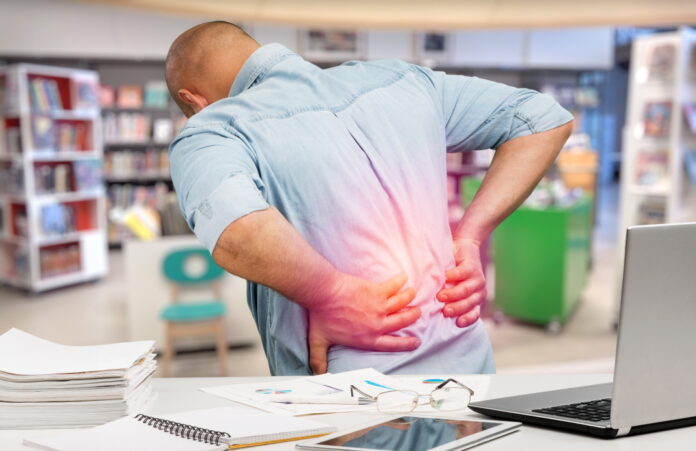
In sprains, the pain mainly extends to the back or buttocks but not to the calf.
By Winston Lee L. Ac, Ph.D., KMD
When most people first experience acute and severe back pain, the first thought that comes to mind is, “is it a disc herniation?” Also, from the point of view of Asian medicine doctors who treat such patients, it is necessary to figure out in advance whether or not they are a disc-related patient, so that treatment can be completed in 1~2 weeks, or whether an X-ray or MRI examination is necessary for an objective diagnosis, and longer-term treatment should be made.
A herniated disc is a disease that occurs when the cartilage tissue between the vertebrae is pushed back or sideways and compresses the spinal cords. On the other hand, a sprain is when the muscles or ligaments around the lower back are stretched excessively, and the muscle fibers are injured, resulting in pain. If so, how can we distinguish this from the apparent symptoms before receiving a diagnosis with an MRI?
One thing in common between a herniated disc and a sprain is that there is severe pain with movement, such as bending over and straight up, and there is a similar range of motion limitation in bending and rotating angles. If the pain is too severe, the torso curves sideways like a snake that compensates for the pain. However, the decisive difference between these two is the presence or absence of ‘neurological abnormalities.’
In the case of a herniated disc, pain or numbness extending to the buttocks and legs is seen in most cases. However, in sprains, the pain mainly extends to the back or buttocks, but there is hardly any pain or numbness extending to the calf. As mentioned above, sprains are injuries to muscles and ligaments, so the pain usually does not travel to the end of the leg.
Another distinction is the duration of the pain. In the case of sprains, unless the patient is very old or has other underlying diseases, it is normal to be fully recovered in about 4 weeks, on average, in 2 weeks. Even without treatment, most of these patients recover gradually within a few weeks if they don’t overuse the back.
But that’s not the case with herniated discs. The cause is that the disc is pushed out and presses on the spinal cord; nevertheless, the pain improves within 2 to 3 weeks. If the pressure on the lower back becomes severe by overdoing it again, severe pain or numbness will occur again. They also suffer from similar symptoms two or three times a year.
Therefore, if the patient suffers from back pain that happens several times a year, or if the pain extends to the legs as well as the back, this is not just a sprain but a disk related disease. In this case, it is necessary to see a doctor and have a professional diagnosis and treatment. For a more accurate diagnosis, it is essential to get the root cause by taking an MRI. If the patient has been diagnosed with a herniated disc, he or she must receive acupuncture, chiropractic, or physical therapy to control the pain.
Also, to reduce the damage or swelling of the nerve itself and to restore the nerve quickly, it should be treated while taking an anti-inflammatory herbal medicine at the same time. Simply put, disc herniation needs to be treated to fit them. Even if the pain disappears, as long as the cause still exists, there are many cases where it recurs, or a bigger issue occurs later.
































